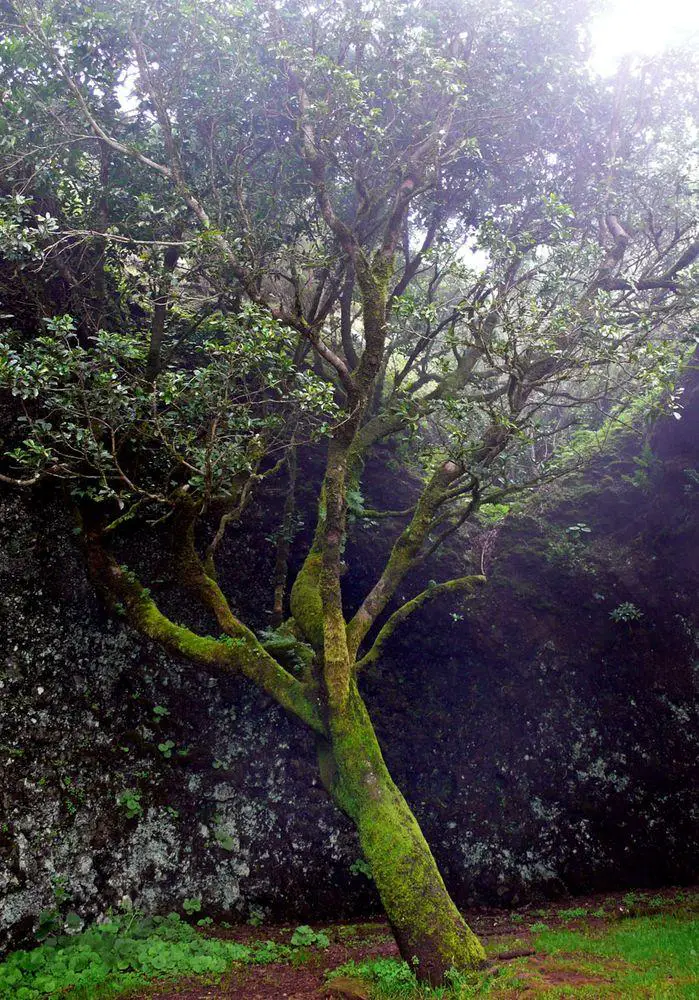Wondermondo 🢖 World 🢖 Wonders of Africa 🢖 Wonders of Spain 🢖 Wonders of Canary Islands
Territory
Wonders of Canary Islands
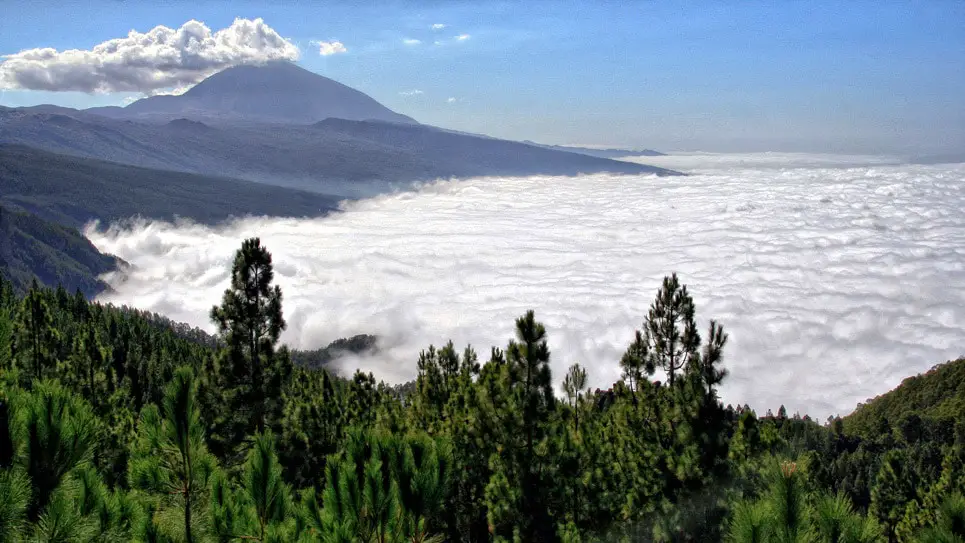
 Highlights
Highlights
Canary Islands is one of autonomous communities of Spain. These islands geographically belong to Africa.
It is hard to single out the most outstanding wonders of Canarian landmarks, but these could be:
- Heritage of Guanche. This extinct culture was very interesting: Guanche left artificial cave settlements, petroglyphs, numerous sacred sites, and legends. It is possible that on islands existed other culture before the coming of Guanche.
- Historical European cities. Here is located the first Renaissance city in the world – La Laguna and other interesting cities.
- Ecosystems. On the fertile land of isolated islands have evolved unique ecosystems, such as laurisilva – remnants of subtropical forest that once covered also much of Europe.
The main islands of Canary Islands
- El Hierro
- Fuerteventura
- Gran Canaria
- La Gomera
- Lanzarote
- La Palma
- Tenerife
Map with the described wonders
If you see this after your page is loaded completely, leafletJS files are missing.
 Top 25 wonders of Canary Islands
Top 25 wonders of Canary Islands
Geological wonders
Mount Teide
Tenerife
3 718 m high volcano. Around the summit of the volcano are numerous species of plants and animals that are found only here, such as Teide bugloss with up to 3 m tall, red inflorescences. Sacred mountain to Guanches, seen as a gate to hell.
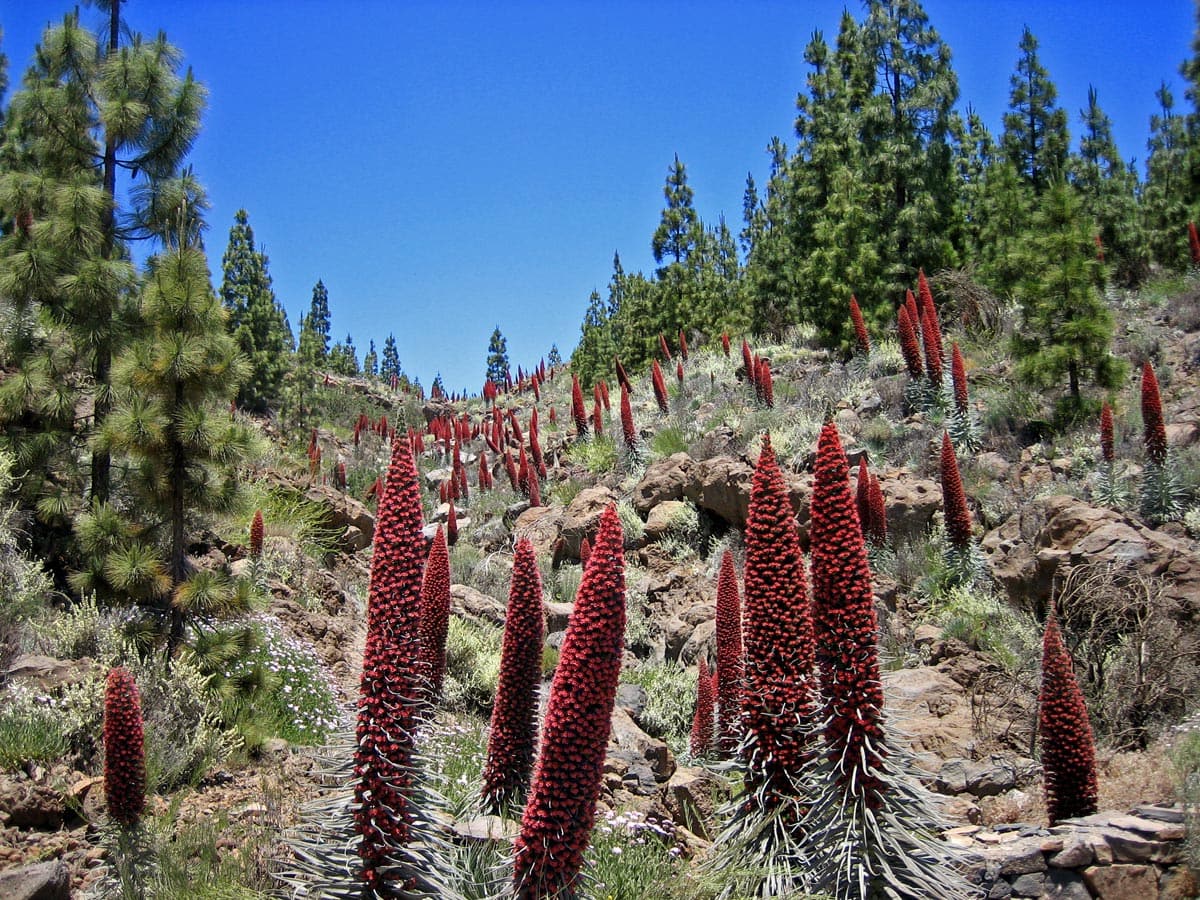
Cueva de los Verdes
Lanzarote
Spectacular lava tube, some 6 km long. The cave includes a concert hall. Part of the cave – Tunnel de la Atlantida – is the longest known submarine lava tube, it is 1,500 m long.
Cueva del Viento
Tenerife
An enormous lava tube, 17 km long, the longest lava tube outside Hawaii Islands.
Bufadero de la Garita
Gran Canaria
Amazing, unusual vortex – blowhole. It has formed in prismatic basalt. Here near the sea coast has formed a constantly changing basin. As the waves come, it rises, flooding over the rims. As the waves recede, the basin empties, and water around it falls in it. Near it are smaller blowholes that resemble geysers.
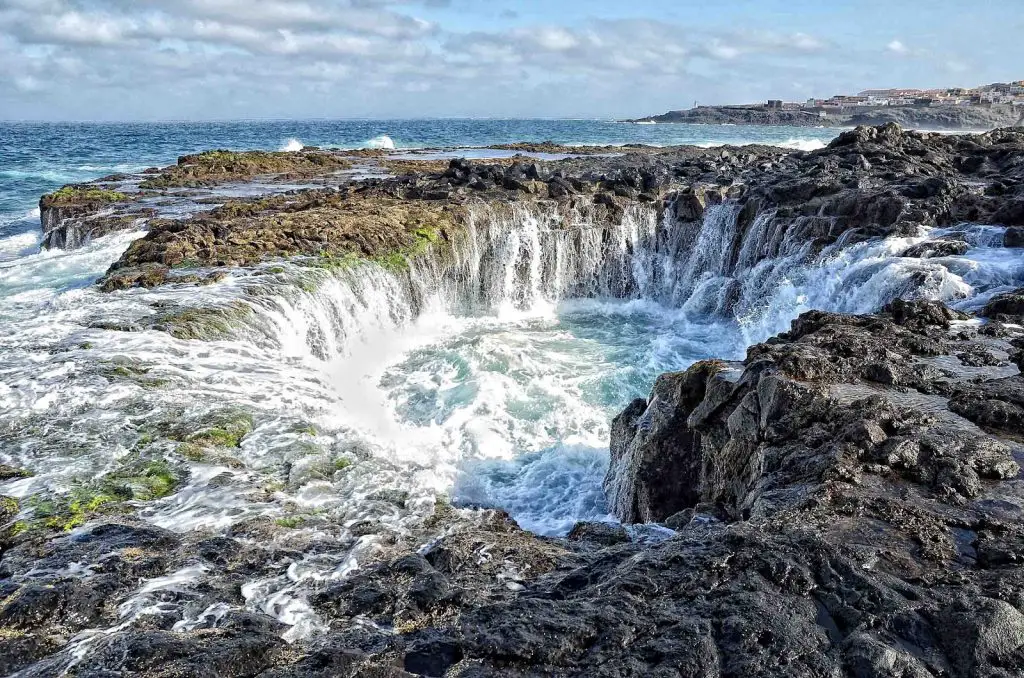
Bandama Caldera
Gran Canaria
An impressive volcanic caldera, some 1000 m wide and up to 200 m deep, surrounded by nearly vertical walls.
Acantilados de Los Gigantes
Tenerife
Impressive wall of sea cliffs, rising up to 500 m tall.
Biological wonders
Drago Milenario
Tenerife
One of the most prominent trees in the world – a giant Canary Islands dragon tree with a circumference of at least 17.4 m.
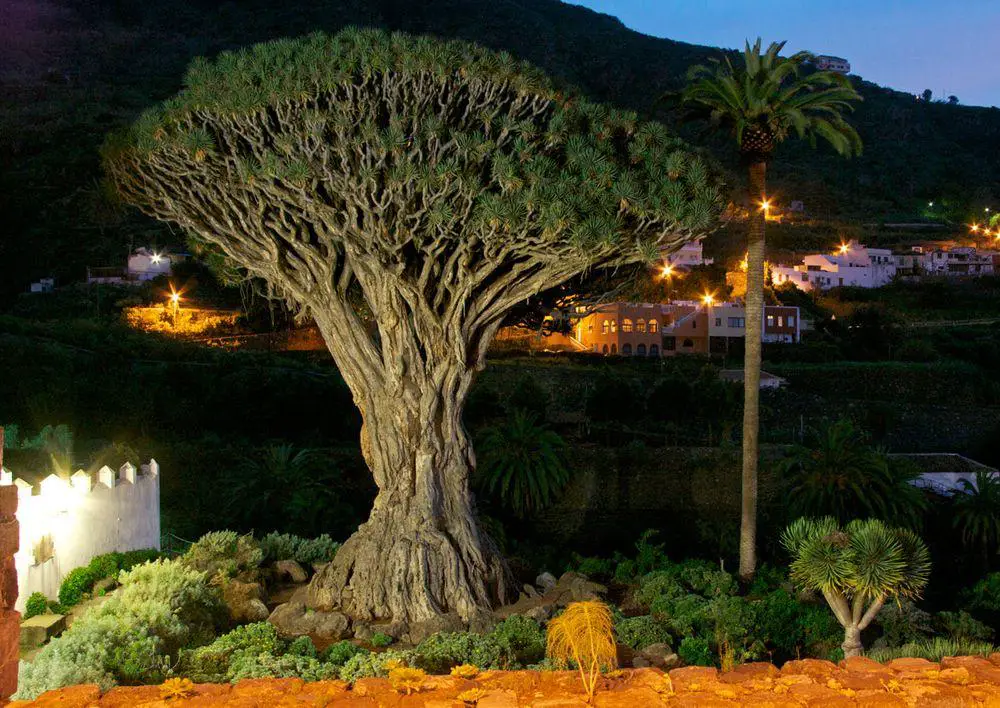
Garajonay laurisilva
La Gomera
The best example of a humid subtropical forest, a relict similar to the forest that covered much of Europe during the Tertiary period. Contains many unique species that are found only in this forest.
Garoé
El Hierro
Large specimen of the rare Oreodaphne foetens tree. This evergreen, fragrant tree was planted in 1957 on the site of an ancient, sacred tree that fell in a storm in 1610. The site and tree were sacred to the aboriginal Bimbache people.
Archaeological wonders
Cenobio de Valerón
Gran Canaria
Massif of a soft volcanic rock that is protected with a basaltic arch. Guanches have made here some 300 caves that served as silos for grain. Beautiful sights from the site.
Cuatro Puertas
Gran Canaria
Mountain with four monumental entrances in an artificial cave – a sacred place to Guanche.
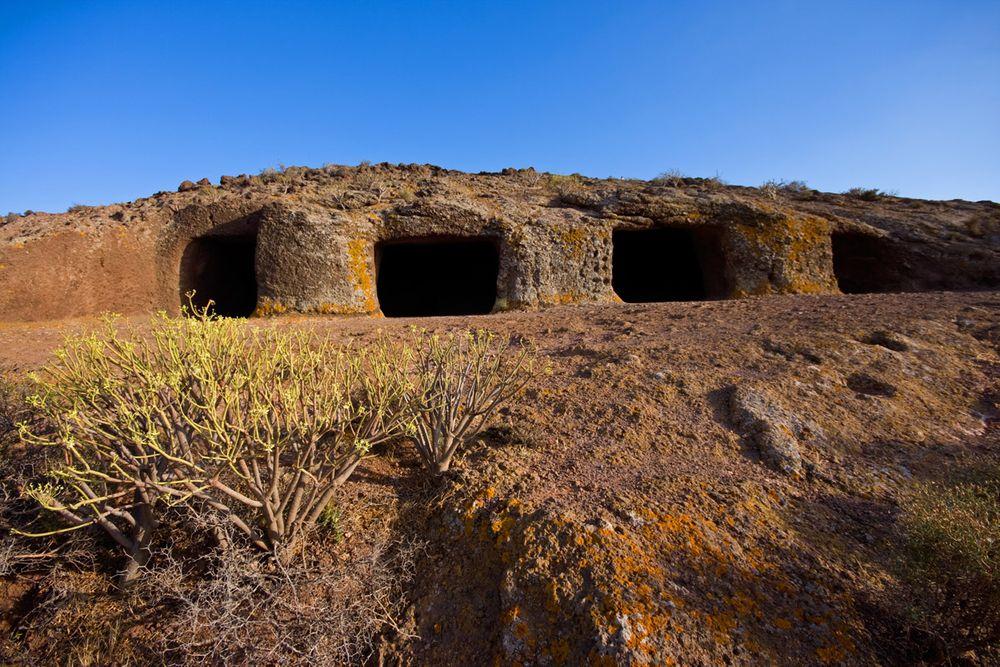
Pyramids of Güímar
Tenerife
Six structures, built from stones without mortar, formed as stepped pyramids. Earlier there were nine such pyramids, now only six remain. Structures most likely were built in the 19th century as a part of agricultural practices, but there are also other theories.
Achbinico Cave
Tenerife
Sea cave – an important sacred site. Although this is the first Christian shrine in the Canary Islands (1446), it was used for rituals for at least three thousand years long. It is possible that here for centuries was kept the permanent fire.
Architecture and legendary wonders
San Cristóbal de La Laguna
Tenerife
This historical city was founded in the late 15th century. Its historical center consists of two parts – Upper City and the Renaissance Lower Town, the first so-called “ideal city”, containing many valuable buildings from the 16th – 18th centuries. This is the oldest planned Renaissance city.
Auditorio de Tenerife
Tenerife
Spectacular arts center building, designed and constructed by Santiago Calatrava and built in 2003.
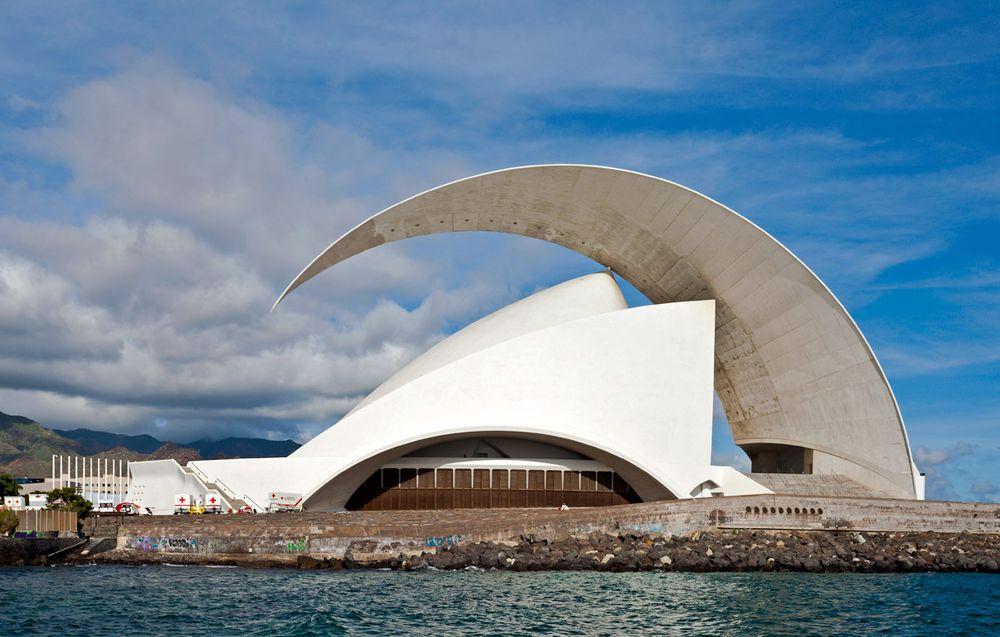
Barranco de Badajoz
Tenerife
A large ravine where many visitors have reported unusual experiences – sightings of angelic beings, poltergeists, balls of fire, demons, etc.
Torre del Conde
La Gomera
Fortified manor, built in the time period between 1447 and 1450. The oldest European-built extant structure in the Canary Islands, constructed in Gothic style.
Las Palmas Old Quarter
Gran Canaria
This historical city was founded in 1478. The city contains numerous valuable buildings and has preserved its Renaissance street pattern. This city in many ways defined the urban pattern of later Latin American colonial cities, with Plaza Mayor and main buildings around this square.
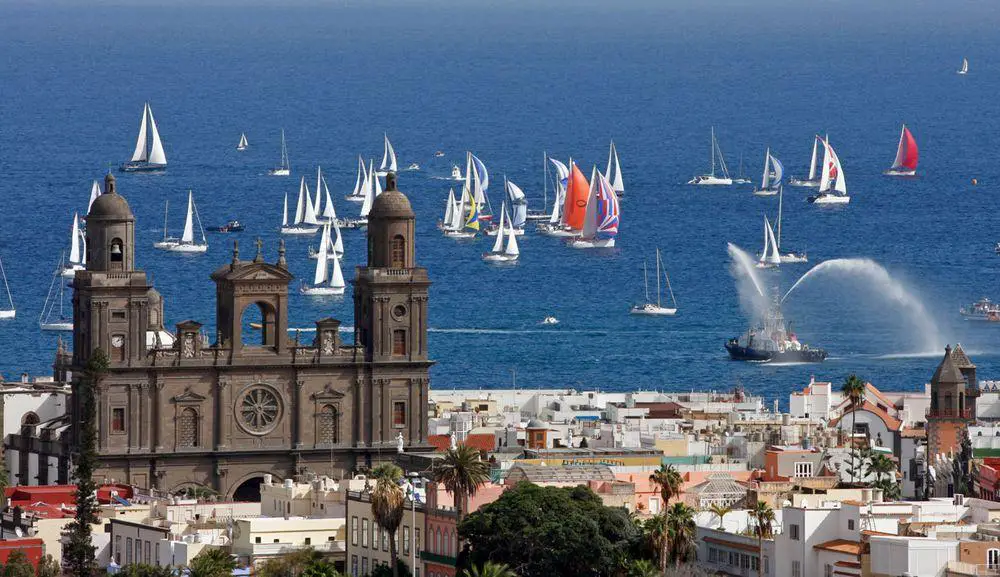
Casa de los Balcones
Tenerife
This city house was built in the Baroque style in 1632. This three-floor house is adorned with woodcarvings, and ornate balconies, the house contains many art values.
Nuestra Señora de Regla Church in Pájara
Fuerteventura
Small historical church (1687) with interesting, rich facade decoration. Some specialists see the Aztec influence in these decorations, while others consider this to be local style.
Museo de la Naturaleza y el Hombre
Tenerife
The best museum of the prehistoric Canary Islands, nature, and history of islands. Especially valuable is the large collection of Guanche mummies.
House of Catalina Lercaro
Tenerife
House of legendary Catalina Lercaro – a woman who was forced into an unwanted marriage and due to this killed herself. Now the house is the best-known ghost site in the Canary Islands.
Arucas San Juan Bautista Church
Gran Canaria
Very ornate Neo-Gothic church, constructed in 1909 – 1977.
Puerto de La Cruz Archaeological Museum
Tenerife
An important collection of Guanche cultural artifacts including pottery and several Guanche mummies. Especially valuable is a figurine of Guatimac – an owl-shaped idol, one of the few idol figures found in the Canary Islands.
San Juan Bautista de Telde Church
Gran Canaria
An old church, built in the first half of the 16th century in simple Gothic forms, with later Neo-Gothic towers from the early 20th century. Valuable monument of art is altarpiece and a statue of Christ made by Tarasco Indians.
 Recommended books
Recommended books
DK Eyewitness Travel Guide: Canary Islands
DK Eyewitness Travel Guide: Canary Islands show these islands at their sun-soaked best. From sandy beaches to craggy peaks, this uniquely visual guide provides cutaways and floor plans of all of the major sights. Special coverage of the islands’ unique geography and the wildlife of the archipelago includes its volcanic rock formations and geysers, diverse flora, and marine life.
The Canary Islands: A Cultural History
The seven volcanic Canary Islands that bask in the Atlantic offshore from the north-west African coast have long had legendary connotations. To the Greeks, they were the Gardens of the Hesperides, blessed with a perennial spring-like climate, while the Carthaginians christened them the ‘Purple Isles’ on account of the rich dye material they obtained there. Inhabitants have ranged from the early Berber-descended Guanches, of whom cultural traces still remain, to the rich blend of European and Latin peoples that evolved after the Spanish conquest in the fifteenth century.

